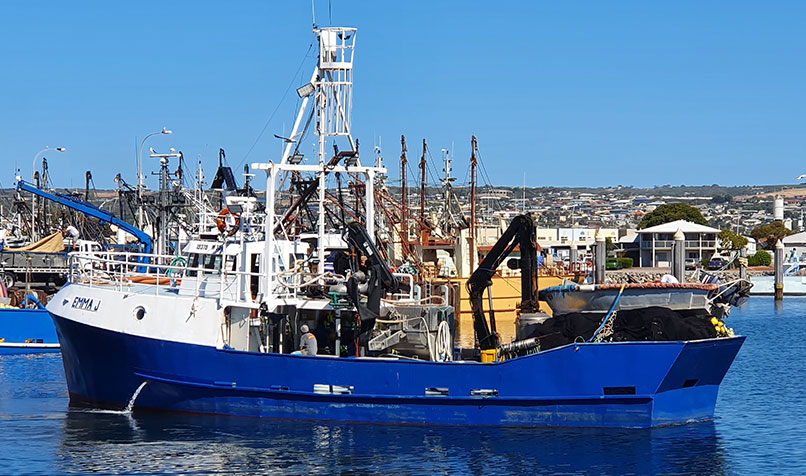Loading component...
At a glance
- At the height of the pandemic, many looked to reshoring manufacturing as a solution to crippled supply chains.
- Economists point out that the key to building resilient supply chains is a better understanding of the entire supply chain and its vulnerabilities.
- Instead of relying solely on local suppliers, it is more important to diversify suppliers and use technology to automate processes and drive transparency.
Mid-last year, as the effects of the COVID-19 pandemic began to set in, headlines announced stories of crippled supply chains, of consumers and businesses pivoting to local suppliers and of companies reshoring their manufacturing and sourcing of raw materials.
Long, fragile supply chains would now be a thing of the past, many believed. In the future, businesses would need to take a very different approach to supply chain management.
Some of the early predictions did come to pass – supply chain management is certainly a different creature to the one we knew pre-pandemic.
However, the reshoring movement never really took off. In its place emerged other priorities – technological transformation, as well as a sharp focus on resilience and transparency across supply chains.
“The debate about re-shoring was never going to go too far, based on existing capabilities and the fact that we are in a globalised world,” says Jarrod Ball, chief economist at the Committee for the Economic Development of Australia (CEDA).
“In some areas, reshoring may be one possible way of making a supply chain more resilient, but it’s more likely that resilience comes from deeply understanding your full supply chain, having a level of transparency around that, and understanding where the vulnerabilities are.”
Resilience, Ball says, doesn’t come from bringing the entire supply line back home. Instead, it’s about diversifying suppliers, developing deeper relationships with those suppliers, and using technology to automate processes and create transparency.
“In the past, there were no incentives for creating resilience in new supply chains; it was really about cost and efficiency,” Ball says.
“COVID-19 has illustrated the fact that we are starting to see more shocks in the global economy – all sorts of geopolitical shocks, trade shocks, major weather events, etc., as well as economic shocks. Supply people within organisations have to be on top of the resilience issue.”
Efficiency and resilience rarely co-exist
Prior to the pandemic, there was already a growing movement against globalisation and its long supply chains, says Prakash Singh, professor of operations management and head of the Department of Management and Marketing at the University of Melbourne.
The pandemic simply forced another layer of issues, mainly as a result of lockdowns that took place at various times in different territories around the globe.
“It highlighted the fragility of many industries that depend on the efficient operation of extended global supply networks,” Singh says. “A certain level of brittleness meant that, if one link in the chain went down, the whole chain went down.”
Many industries, Singh says, had developed highly efficient supply chains, which is excellent from a cost and performance perspective, but efficiencies do not go hand-in-hand with resilience – cost minimisation only works well if everything else is also working well.
“If a truck driver wasn’t able to get to work to move products from a factory to a port, customers in other countries were not able to find those products on the supermarket shelves,” Singh says. “And plenty of truck drivers, and others, were unable to carry out their roles.”
What is now required to create opportunity and mitigate risk, Singh believes, is a focus on resilience and transparency, instead of cost efficiency and performance. One of the most powerful tools to make this happen is technology.
Technological transformation in supply chain management
About 40 per cent of the customer base for cloud-based enterprise resource planning (ERP) and accounting platform Wiise is in the supply chain space. The company’s CEO, Jonathan Attia, has seen those clients and others in their sector undergo “five years of digital transformation in the last eight months”.
Part of the motivation for getting themselves up to speed technologically came from a lack of control over their businesses during the COVID-19 pandemic. They had low visibility over brittle supply chains and little real-time insight to feed good business decisions.
Previously, backwards-looking data was enough to get them through, because the supply chain environment was constant, dependable and unchanging. Today’s decisions could be reliably informed by yesterday’s data.
However, when every day is different, when every day brings completely new and unexpected challenges, historical data is worthless.
“A lot of businesses have now moved to the cloud, because it means they can take advantage of real-time data and draw insights from it,” Attia says. “But there are still a lot of businesses that haven’t moved from pen and paper, spreadsheets or on-premises systems.”
What other changes are businesses making to their supply chains? They are finding alternatives to ensure multiple suppliers, locally and internationally, Attia says. They are renegotiating terms around the delivery of products and raw materials, and they are entering into creative partnerships to develop innovative offerings.
"A lot of businesses have now moved to the cloud, because it means they can take advantage of real-time data and draw insights from it."
Businesses are thinking about combining their products with others to create new routes to market, he says.
Some restaurants, for example, during times they are not permitted to operate as usual, have partnered with distribution-based businesses that might also have suffered a slowdown to deliver organic food boxes to customers’ homes.
“Partnering is something people understand the value of. I think we’re going to see it more and more, particularly as we’re seeing a shift in purchase behaviour from global to local,” Attia says.
“From customers, we’re seeing a shift from a buying perspective that reflects a greater consciousness around how we support local businesses, to build resilience internally.”
As that consciousness around the source of a product grows, some businesses are turning to technologies such as blockchain as proof of provenance.
“People want to know where the products are coming from, where they’re being manufactured, where the raw materials come from, when it was made, who made it, and under what conditions,” Attia says.
“I think, in the next couple of years, you’ll be able to scan a QR code on a product to see all that sort of information. Is it organic? Where’s the certification? What ingredients went in?”
Customers are more interested than ever in a brand’s values and ethics, but businesses can’t truly claim to be living their values unless they are aware of what is happening at every step of their supply chain. In fact, legislation now requires many businesses to have that awareness and report on it.
CPA Australia resource:
Supply chains and modern slavery
In Australia, legislation has been introduced that is intended to prevent modern slavery within supply chains. The Commonwealth Modern Slavery Act 2018 was enacted in November 2018, and the first annual reporting period for entities whose financial year is July to June ended on 30 June 2020.
Dr Stephen Morse is CEO of Unchained Solutions, a professional services firm that provides facilitation, training, analysis and strategic planning to help Australian companies comply with the Modern Slavery Act.
By the end of March this year, the majority of more than 3000 companies that fall within the compliance mechanism will have needed to demonstrate to the Home Affairs Ministry what they have done to assess and mitigate the risk of modern slavery in their supply chains and operations.
Modern slavery covers everything from bonded labour, forced labour, the worst forms of child labour and human trafficking, forced sex work, to control and coercion, removal of freedoms and other forms of human rights abuses.
“There are estimates of at least 40 million people globally affected by modern slavery,” Morse says.
“In Australia, we have a host of temporary workers and migrant workers who are exploited to various degrees and who, because of COVID-19, are at greater risk of having to work for no pay, or with lower wages, or being compromised around their papers.
“The annual reporting mechanism encourages continuous improvement over several years. Companies need to take reasonable steps towards transparency and responsibility. There’s a lot of scope for creativity, for innovation and for the use of technology to empower their supply chain. It’s not just about compliance; it’s about ensuring the sustainability of the business supply chain and ensuring the rights of workers.”
Deep relationships with critical suppliers
Many supply chain challenges, both current and future, can be helped by developing closer and more collaborative relationships with critical suppliers, says Singh. This means the businesses can work together towards common goals, share information, create shared cultures and ensure a harmonising of their values.
The responsibility doesn’t just sit with the procurement team. Companies that manage supply chains well, says Ball, have commitment to supply chain transparency from the board level down.
“Supply chain resilience has been a bit of a sleeper issue,” Ball says.
“Now, many boards are very interested in it, in developing a clear understanding and complete transparency all the way down through their chain.
“Many of the companies that took the Modern Slavery Act most seriously and did the work to gain a full understanding of their supply chains are now in a better position than they otherwise would have been, because that also showed them the vulnerabilities in their supply chains.
“This also means changing the incentives for chief procurement officers and others who design supply chains around resilience, rather than just cost and efficiency.
“You’ll never be able to predict the next shock, but you can focus on resilience by understanding your supply chain and strengthening and diversifying the weak spots. That way, next time you’re knocked down, you’ll get back up more quickly.”
How tech transformed an Australian seafood business

Two years ago, Australian ethically sourced, sustainable seafood supplier Pro Seafoods was struggling with the idea of growth. Five staff members - who all kept track of orders, supplies and deliveries by using Excel spreadsheets and emails - were doing all they could to satisfy the needs of 30 key clients.
“We wanted to grow. We wanted to bring in more product lines... But we couldn’t do that with tracking our inventory and sales on an Excel spreadsheet,” says Amy Turner, information and communication technology and procurement manager at Pro Seafoods. “It was just too open to error.
“We are quite selective in our supply chain. We try to be ethically and environmentally friendly and sustainable. But we’re also known for quality, so we are very stringent about who we bring into our supply chain.”
About 80 per cent of the team’s time, Turner says, was spent on administration. Growth could only be achieved by an increase in headcount, the expense of which created greater risk for the business.
Instead, Pro Seafoods turned to technology, using cloud-based ERP software to automate several processes, keep all information updated in real-time in a centralised database, and ensure the team is always singing from the same song sheet.
After ERP implementation, staff found they were only spending 20 per cent of their time on administrative tasks, freeing them up to do higher-value work. They also had far greater visibility over costs in every part of the supply chain. Today, a team of four (one person left and did not need to be replaced) comfortably manages orders from 150 clients – five-fold growth in two years.
“If we still used spreadsheets and had 150 clients, it would be a mess. It would be a disaster,” Turner says. “Now, our salesman can focus on sales. He can be on the road all day, every day, without impacting his ability to send out invoices.
“We’ve all been able to focus on the areas we were hired for, rather than just administration.”

